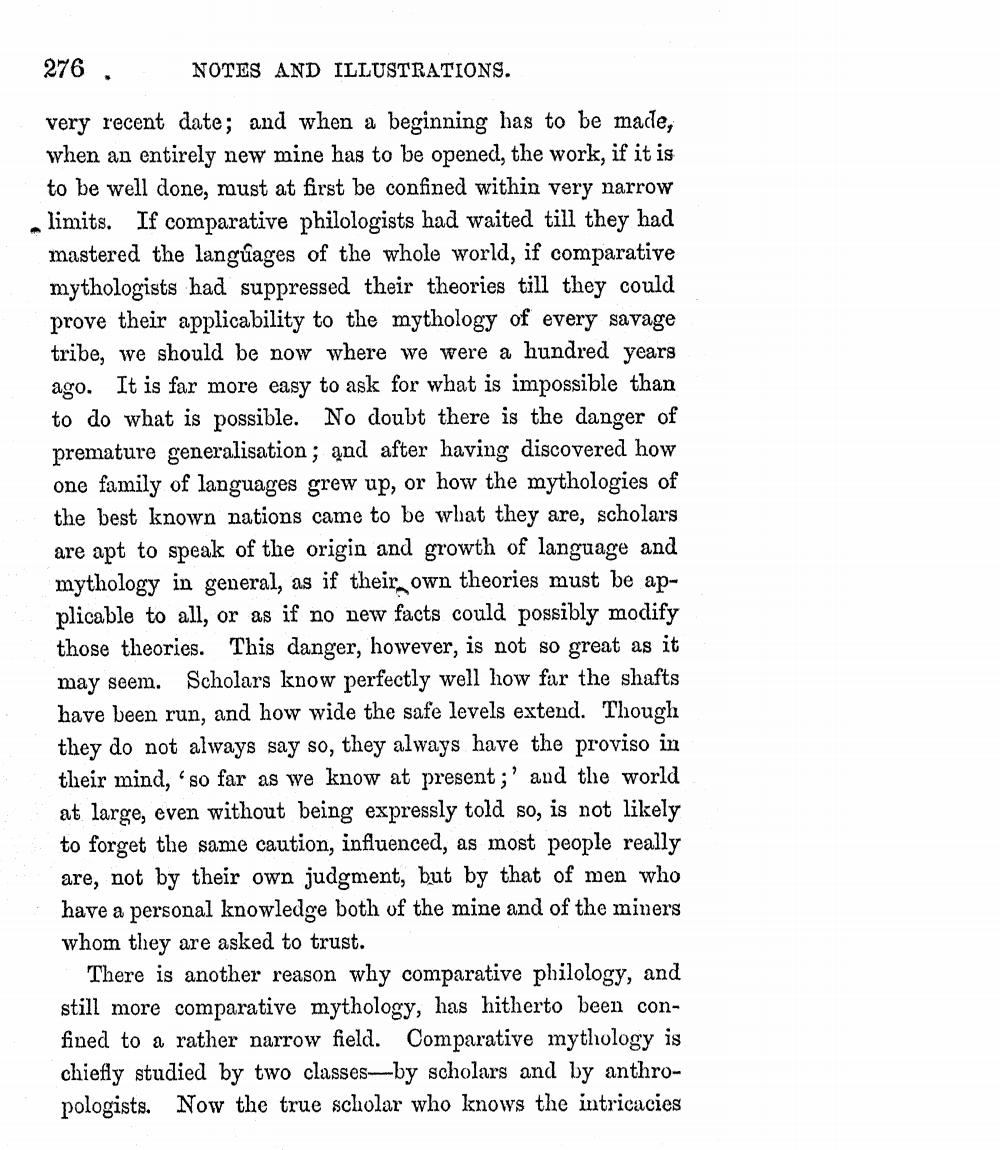________________
276.
NOTES AND ILLUSTRATIONS.
very recent date; and when a beginning has to be made, when an entirely new mine has to be opened, the work, if it is to be well done, must at first be confined within very narrow limits. If comparative philologists had waited till they had mastered the langủages of the whole world, if comparative mythologists had suppressed their theories till they could prove their applicability to the mythology of every savage tribe, we should be now where we were a hundred years ago. It is far more easy to ask for what is impossible than to do what is possible. No doubt there is the danger of premature generalisation; and after having discovered how one family of languages grew up, or how the mythologies of the best known nations came to be what they are, scholars are apt to speak of the origin and growth of language and mythology in general, as if their own theories must be applicable to all, or as if no new facts could possibly modify those theories. This danger, however, is not so great as it may seem. Scholars know perfectly well how far the shafts have been run, and how wide the safe levels extend. Though they do not always say so, they always have the proviso in their mind, so far as we know at present;' and the world at large, even without being expressly told so, is not likely to forget the same caution, influenced, as most people really are, not by their own judgment, but by that of men who have a personal knowledge both of the mine and of the miners whom they are asked to trust.
There is another reason why comparative philology, and still more comparative mythology, has hitherto been confined to a rather narrow field. Comparative mythology is chiefly studied by two classes—by scholars and by anthropologists. Now the true scholar who knows the intricacies




